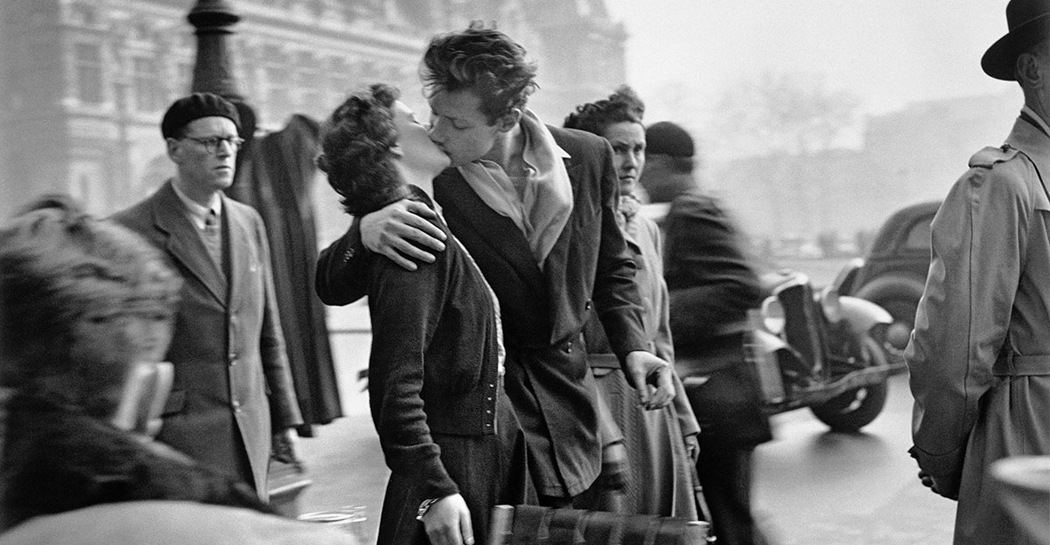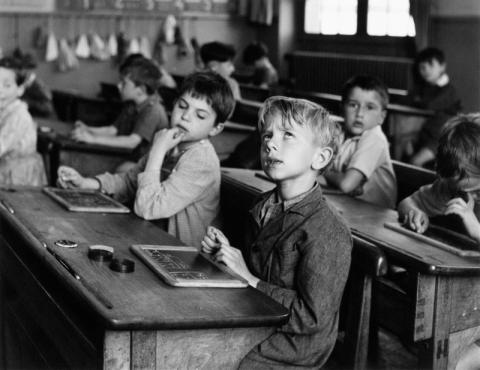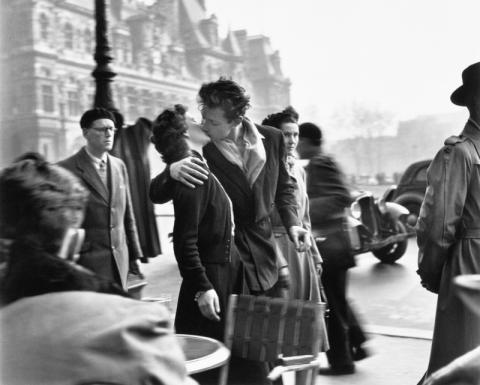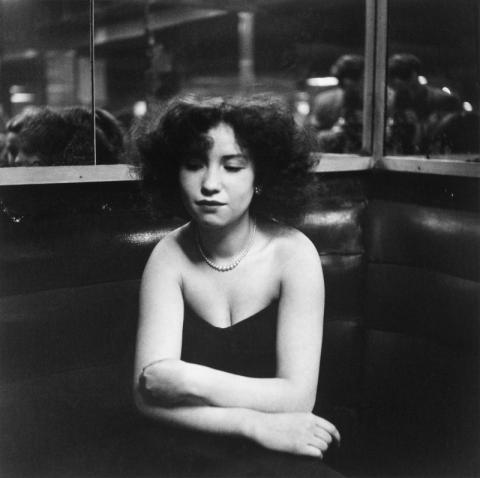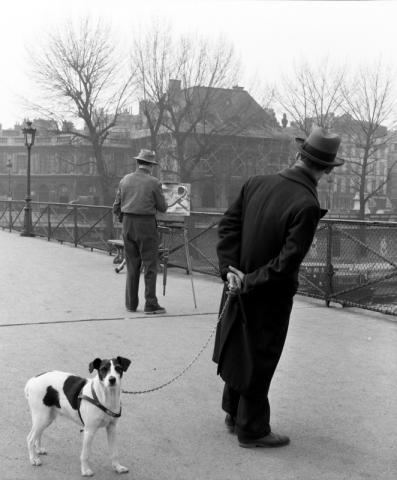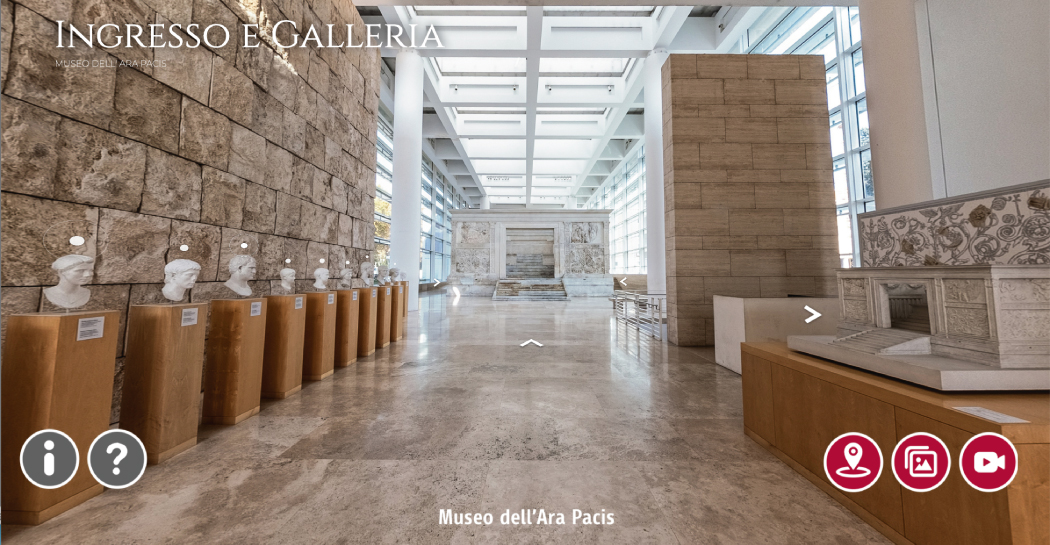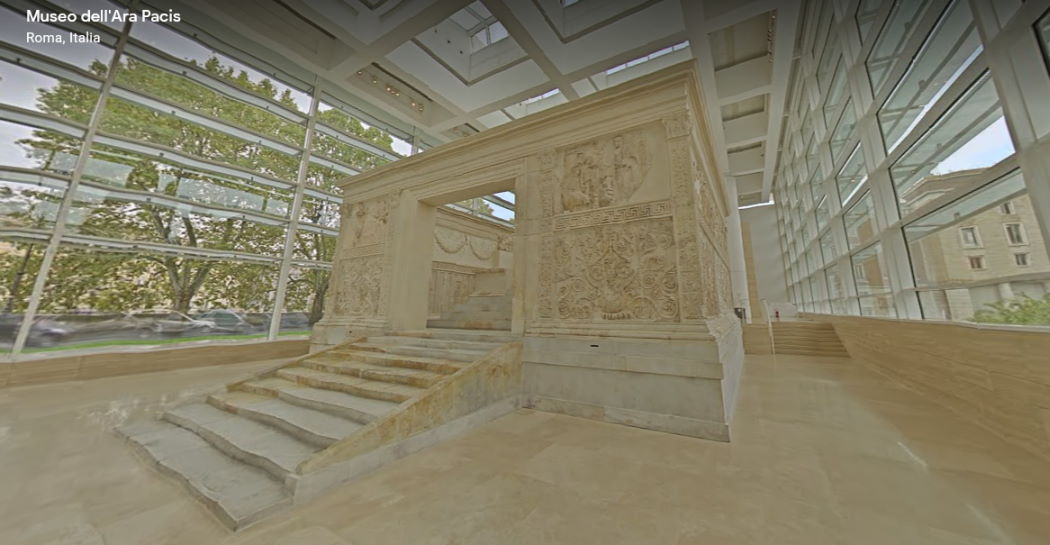Robert Doisneau
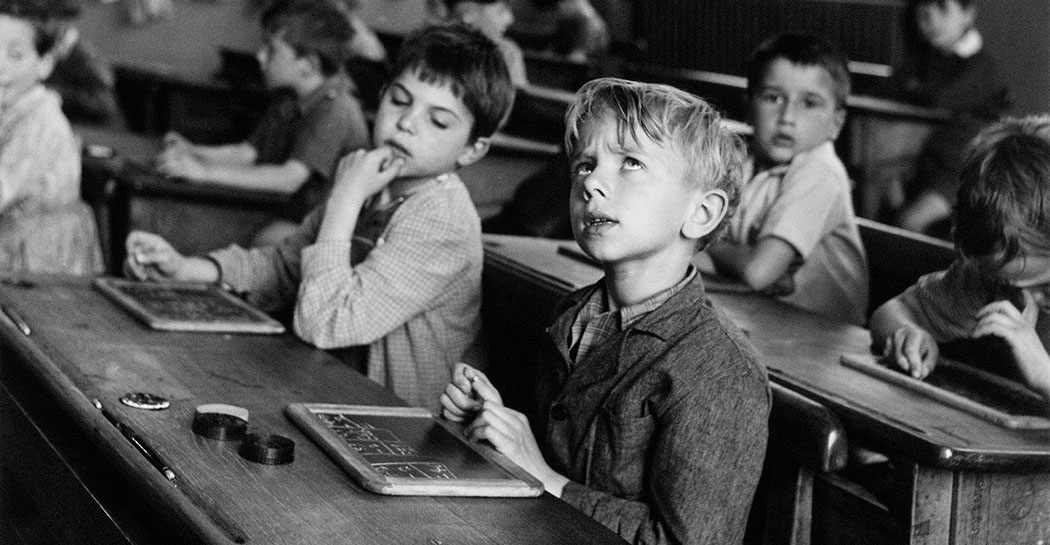
A collective exhibition, curated by Gabriel Bauret, on the famous French photographer, through more than 130 images from the collection of the Atelier Robert Doisneau in Montrouge.
The shot of the young couple kissing, indifferent to the crowds of passers-by and the traffic on the Place de l'Hôtel de Ville in Paris, is one of the best-known photographs in the world. The author is Robert Doisneau, the great master of photography to whom the exhibition at Museo dell'Ara Pacis is dedicated.
Introductory video by the curator
The exhibition, curated by Gabriel Bauret, is promoted and produced by Roma Culture - Sovrintendenza Capitolina ai Beni Culturali, Fondazione Cassa di Risparmio di Padova e Rovigo and Silvana Editoriale Project. Supported by Zètema Progetto Cultura. Catalogue by Silvana Editoriale. Radio partner Dimensione Suono Soft.
With Henri Cartier-Bresson, Doisneau is considered one of the founding fathers of French humanist photography and street photojournalism. With his lens, he captures the daily lives of the men and women who populate Paris and its suburbs, with all the emotions of the gestures and situations in which they are engaged.
More than 130 monochrome silver salts prints from the collection of the Atelier Robert Doisneau in Montrouge are on display. It was in this atelier that the photographer printed and archived his images for over fifty years, and it was there that he passed away in 1994, leaving a legacy of almost 450,000 negatives.
We tell you some photos on display in the Video Podcast series Ten photos for ten stories
The exhibition is divided into 11 sections:
Concierges (1945-1953): a series of shots dedicated to the concierges of Paris because, as Doisneau states, 'The real Paris cannot be conceived without its concierges'. Thus memorable portraits such as Concierge aux lunettes, Les Concierges de la Rue du Dragon and Madame Augustin were born;
Enfances (1934-1956): the subjects photographed by Doisneau are often complicit in his intentions, particularly the children who populate and animate the suburban streets. The photographer felt at ease in their company, as testified by the large number of shots featuring them from the mid-1930s onwards;
Occupation et Libération (1940-1944): when Robert Doisneau finally achieves the status of an independent photographer, his momentum is broken by the war and the Occupation. Daily life and winters are hard, but the Liberation will give him the opportunity to restore the effervescence that reigned supreme in Paris at that time, as in the shot entitled Camouflage, [Libération de Paris];
L'Après-Guerre (1945-1953): the rebirth of the post-war period is portrayed in the uncertain step of a child in Les Premiers Pas or in the festively dressed girls of Dimanche matin or in the smiles on the faces of Les Habitants de la Rue du Transvaal;
Le Monde du travail (1935-1950): Doisneau worked for five years in the advertising department of the Renault workshops which, he says, allowed him to "get to know the world of the early risers". On display are some of the shots Doisneau took of workers in the Paris suburbs;
Le Théâtre de la rue: in the school of the street, far richer and more captivating than any other schooling, Doisneau found a beauty, disorder and splendour that seduced him. From the vegetable peddler portrayed in Les Oignons, to the Pêcheur à la mouche sèche or the Père de famille, no-one escapes Doisneau's attentive gaze;
Scènes d'intérieur (1943-1970): interior scenes in which, quoting Jean-Claude Lemagny, "the ridiculous side of situations is accepted primarily by its victims. We are not interested in whether the models are aware of being funny or moving', as in Créatures de rêve;
Mode et Mondanités (1950-1952): in 1950 Robert Doisneau met Edmonde Charles-Roux, a journalist from 'Vogue' and became a chronicler of Parisian life and the artistic life of the time. This section therefore brings together some photographs of Doisneau as a witness to the great balls and sumptuous weddings of the post-war period;
Portraits (1942-1961): a perhaps lesser-known part of Doisneau's oeuvre consists of the numerous portraits, often made on commission. In front of his lens parade painters, draughtsmen, writers, filmmakers, actors, scientists such as Picasso, Dubuffet, Alberto Giacometti, Jean Cocteau and many others with whom the photographer established sincere friendships that would influence the destiny of his photographs;
Une certaine idée du bonheur (1945-1961): "What I was trying to show was," recalls Doisneau, "a world where I would feel good, where people would be kind, where I would find the tenderness I hoped to receive. My pictures were like a proof that this world could exist." Whether in an improvised dance in the street as in La Dernière Valse du 14 juillet or in the portraits of weddings or even the iconic Le Baiser de l'Hôtel de Ville;
Bistrots (1948-1957): dragged along by Robert Giraud, Doisneau discovers the ambience of the bistrots and the banlieue of Paris; the street thus gives way to the methodical exploration of the most unexpected universes where Doisneau ends up feeling at home; memorable portraits such as that of Mademoiselle Anita are born.
Special attention has been paid to accessibility for this exhibition: for visually impaired people, a dedicated route has been designed in cooperation with the Museo Tattile Statale Omero, equipped with relief drawings and related audio descriptions. In addition to these supports, a calendar of free tactile visits, guided by specialised operators, is available.
Free guided tours of the exhibition are also available for the deaf public: visitors are accompanied by interpreters of the Italian Sign Language - LIS, a service provided by the Department of Social Policies and Health - Directorate of Personal Services of Roma Capitale and realised by the Cooperative Segni d'Integrazione - Lazio.
Therefore, whether it is a commissioned photograph or the result of his free wandering around Paris, we see the emergence of a style imbued with a particular forma mentis, which also transpires in his writings and photo captions; a style that mixes charm and fantasy, but also a freedom of expression not far removed from surrealism. The multitude of characters and stories that populate Doisneau's work translates into an artistic attitude and a philosophy of life. If style is the man, as Georges-Louis Leclerc de Buffon says, similarly Doisneau's photography identifies with some of his subjects to express a kind of restlessness or melancholy.
Indeed, Doisneau's work is an expression of an empathetic gaze, which even becomes tenderly involved when he photographs lovers and children.
"I like," he continues, "people for their weaknesses and flaws. I get on well with ordinary people. We talk. We start talking about the weather and little by little we get to the important things. When I photograph them, it is not as if I am there examining them with a magnifying glass, like a cold, scientific observer. It's a very brotherly thing, and it's great to shine a light on those people who are never in the spotlight." "The photographer should be like blotting paper, he should let himself be penetrated by the poetic moment. His technique should be like an animal function, it must act automatically."
Clips from Clémentine Deroudille's film 'Robert Doisneau. Le Révolté du merveilleux' and an interview with curator Gabriel Bauret.
The exhibition is accompanied by the catalogue "Robert Doisneau", published by Silvana Editoriale.
Robert Doisneau was born in 1912 in the Paris suburb of Gentilly. His training as a photographer began with an apprenticeship in the workshop of an advertising photographer. But his attention soon shifted to the working-class neighbourhoods of Paris and the banlieue, images that began to appear in magazines through the Rapho agency, of which he was one of the most important members. The war then prompted him to put himself at the disposal of the Resistance to give a new identity to the wanted. After the Liberation, here are a few reportages for "Vogue" and in '49 the book produced in collaboration with his partner, the famous writer Blaise Cendrars, La Banlieue de Paris, the first synthesis of the many stories in images that he would devote to this world. Doisneau describes its everyday life, composing a visual tale in which a deep humanity and a note of humour, always present in his work, are mixed.
Information
From May 28 to September 4, 2022
Every day 9.30 - 19.30
Last admission one hour before closing time
Before planning the visit, CONSULT THE NOTICES
ONLY EXHIBITION ticket Robert Doisneau
adults € 11,00
concessions € 9,00
special School groups € 4,00 per student (pre-sale required in advance only calling at the 060608)
special Family € 22,00 (2 adults and children under 18 years of age)
The exhibition is not free of charge on the first Sunday of the month.
For more detailed information please consult the page Tickets and videoguides
The exhibition is accessible to adults and children with disabilities
Promotor and producer
Roma Culture - Sovrintendenza Capitolina ai Beni Culturali Fondazione Cassa di Risparmio di Padova e Rovigo e Silvana Editoriale Project
Organisational support
Zètema Progetto Cultura
Radio Partner
Dimensione Suono Soft
Images
The use of the images is granted exclusively for the review of the exhibition DOISNEAU ( Rome, Ara Pacis 28 May 2022 - 4 September 2022) and the relative catalogue, within which they are contained.
Images may not be altered, cropped or modified in any way. Full credits must always be given.
Catalogo
Press Room
Gallery
Eventi correlati
1011247

1011246

1011245

1011244

1011243

1011242

1011204

1011203

1011202

1011201

1011200



























